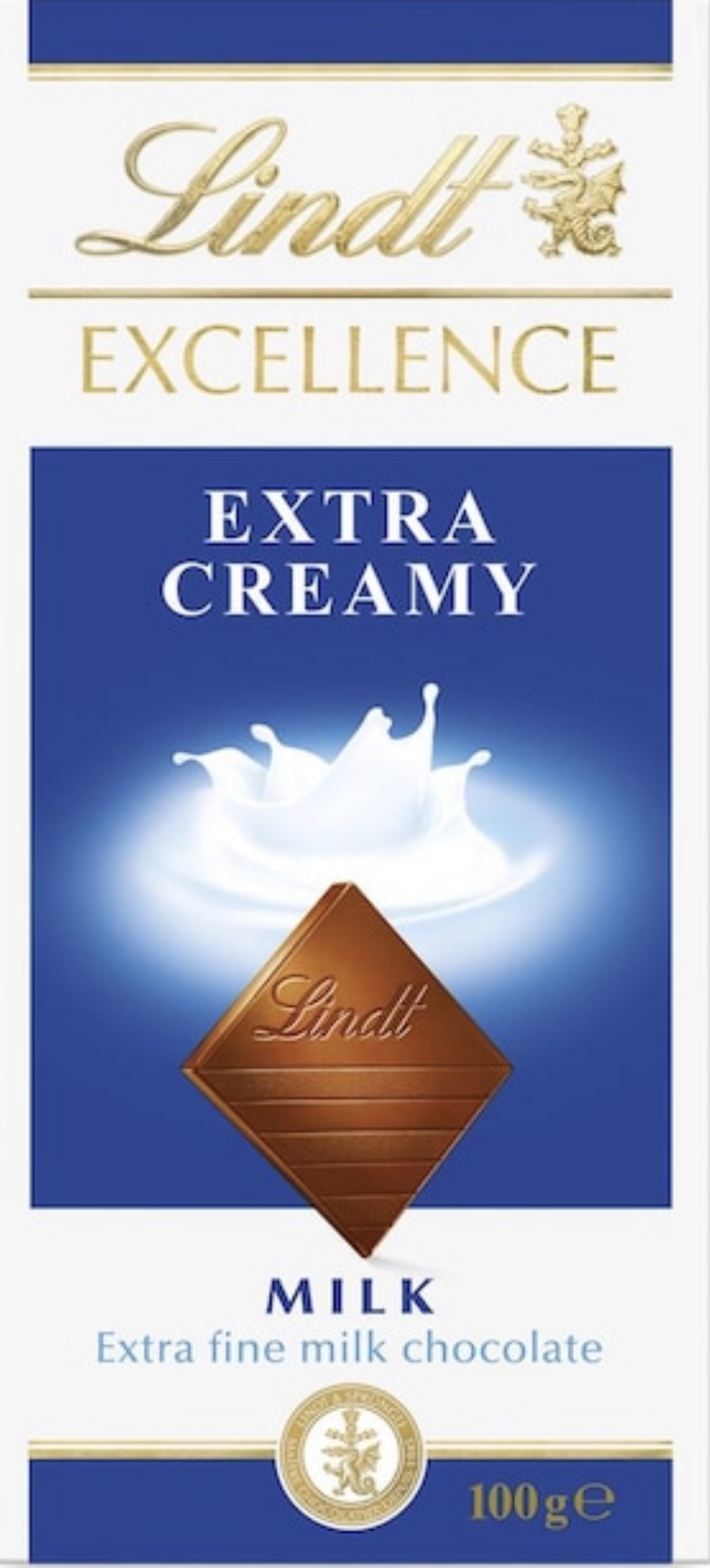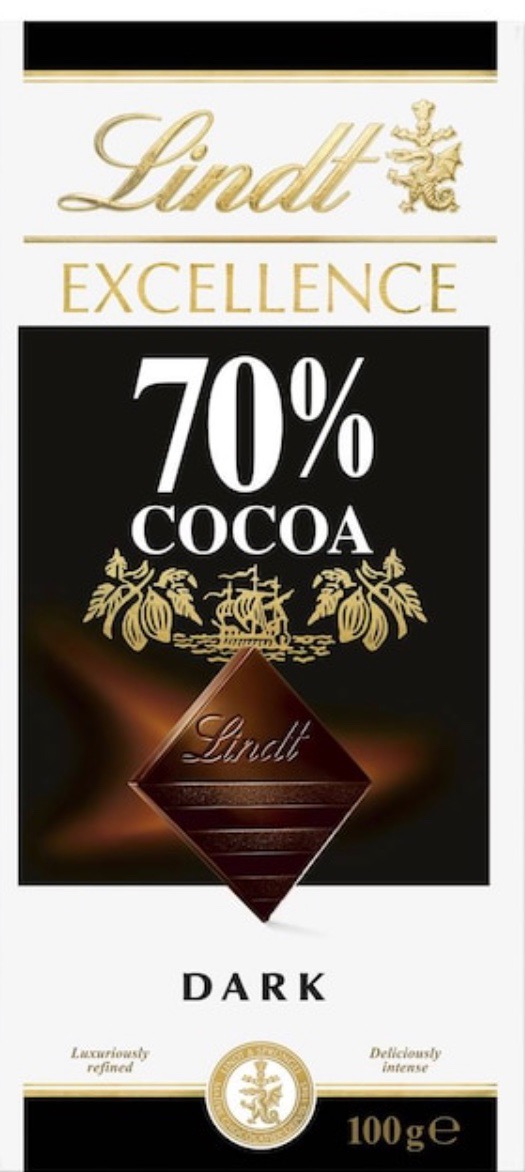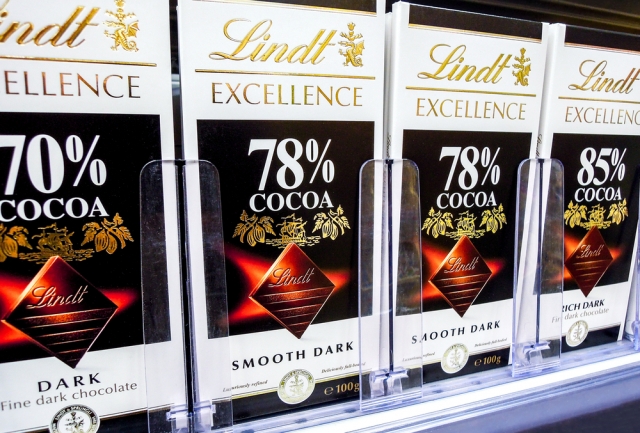Dark chocolate: health benefits

Everyone knows that dark chocolate is healthier – it has less sugar, more fat and more of those helpful flavonoids. But is it a win-win at the shops? And how much should you consume?
Comparing dark with milk chocolate
I compared the same quantity of two brands made by the same manufacturer, Lindt – their dark smooth blend 70% cocoa solids with their regular milk chocolate. In the table, you can see the differences are mainly in the amounts of fat, sugars and sodium.
Dark chocolate has slightly MORE kilojoules than milk thanks to its higher fat level but much less sodium.
|
NUTRITION INFORMATION Per 100 grams |
||
|
Quantity: |
Milk chocolate |
70% cocoa dark chocolate |
|
Energy, kJ |
2390 |
2530 |
|
Protein, g |
6.4 |
6.9 |
|
Fat - total, g |
37 |
48 |
|
- saturated, g |
23 |
29 |
|
Carbohydrate, g |
51 |
33 |
|
- sugars, g |
50 |
29 |
|
Sodium, mg |
114 |
20 |
Source: packaging from Lindt chocolate blocks. For more, visit their website.
The main difference though is in the higher fat content of dark combined with its lower added sugar. This is what makes it taste so bitter. Dark chocolate has much larger amounts of cocoa solids and cocoa butter and less sugar than milk chocolate. Both have around the same protein but that’s about it.
How to pick a good dark chocolate?


Not all dark chocolate is equal. You’ll spot a lot of different percentages listed on the labels of dark chocolate. For instance, 70%, 85%, or 90% cocoa. The higher this percentage, the more bitter they are, but this means they’re likely to have higher potency for the beneficial flavonoids and a higher concentration of chocolate content. Sometimes, however, the 90% dark chocolate taste is so bitter and ‘dusty’ that you may be better off with the 70% dark chocolate.
As a rule of thumb: to be 70% or greater, check that the first ingredient is cocoa mass, not sugar. Otherwise it’s not a true dark chocolate.
Ingredients comparison
Lindt 70% dark chocolate 100g block
| Cocoa mass, sugar, cocoa butter, emulsifier (soy lecithin), vanilla. |
Lindt extra-fine milk chocolate 100g block
| Sugar, cocoa butter, whole milk powder, cocoa mass, milk fat, lactose, skim milk powder, barley malt extract, emulsifier (soy lecithin), flavouring. |
Dark chocolate has been found to be abundant in flavonols which are platelet inhibitors with a mild anti-coagulation effect. This means they can keep your blood free-flowing and reduce your chances of developing an artery-blocking clot.
In addition, flavonols may improve endothelial function (so keeping your arteries elastic), reduce inflammation, lower your blood pressure, prevent cholesterol from being oxidised and even possibly prevent cancer. In chocolate itself, these clever flavonols work to protect chocolate from turning rancid, even without refrigeration.
There are other lower-kilojoule ways to get those flavonols such as from vegetables, fruits or tea.
Dark chocolate is rich in minerals, such as iron, magnesium, and zinc.

How much dark chocolate should I eat to get its health benefit?
Not that much! Generally most studies used a tiny 20 or 30 g of dark chocolate per day. That’s all. This is equivalent to around one fun-size piece of chocolate or three squares from a family-sized block. Or three squares from 100 gram Lindt block which has a total of 10 squares.
Dark chocolate is good, but too much of even a good thing can be a bad thing. Pigging out on chocolate can make you fat and/or leave you feeling you’ve overdone things!
The bottom line
There’s certainly nothing wrong with enjoying a small dose of dark chocolate each day – say, around 30g – as part of a healthy diet.
Remember, only a modest amount of dark chocolate is healthy. It is high in fat and kilojoules (Calories), so moderation is key. Many people get confused and consume overly-large amounts. You should start with 60% and work your way up to 70% or 85%.



